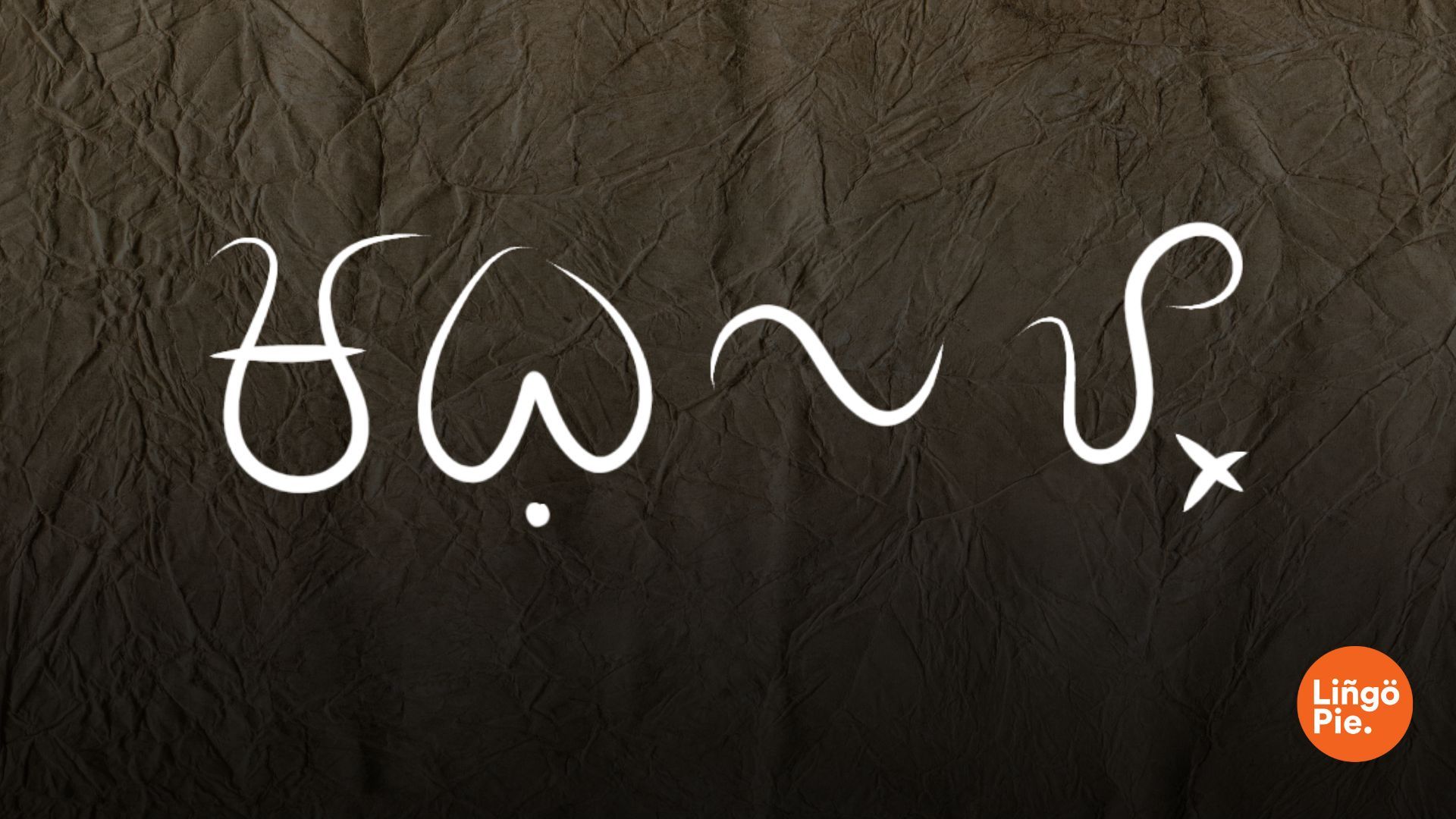You know how sometimes you hear a Filipino friend say something, and it sounds weirdly Spanish? It's not just your imagination! Take words like "keso" for cheese or "mesa" for table - these are actually Spanish words that have found their way into everyday Tagalog.
In this post, I'll explain how these two languages got tangled up in ways that'll make you go "Wait, really?" I'll also clear up that tricky Tagalog vs. Filipino debate that gets everyone confused.
- How to Learn Spanish with News in Easy Spanish [Guide]
- 18 Common Spanish Phrases for Expressing Disgust
- How Long Does it Take To Learn Spanish?
Tagalog And Spanish Language
The Tagalog Language
Tagalog is an Austronesian language from the Philippines that's surprisingly different from what you might expect from an Asian language. While Mandarin has you scratching your head over thousands of characters, and Japanese makes you learn three writing systems (yes, three!), Tagalog keeps things surprisingly simple with its modern alphabet system based on Latin letters - just like English!
What's really cool about Tagalog is how it's evolved over time, picking up influences from all over Asia and beyond. In fact, studies show that some of the Tagalog words and structures we have today are borrowed from Bahasa Indonesia, Chinese, Sanskrit, English, Japanese, and most significantly, Spanish.
And here's something that might surprise you - Tagalog isn't just stuck in the Philippines! With around 32 million native speakers, you'll hear it echo through the streets of California, Nevada, and Arizona. That's right - Tagalog has become such a hit in the U.S. that it's now the fourth most-spoken language in the country.
The Spanish Language
Spanish is the world's second-most spoken language by native speakers (right after Mandarin Chinese), with a whopping 460 million speakers worldwide. You'll also find this romance language as the national language and lingua franca in over 20 countries, making it a really important language to learn.
As one of the Romance languages (alongside Italian, French, and Portuguese), it evolved from Vulgar Latin in the Iberian Peninsula. What makes Spanish super approachable is its straightforward pronunciation rules and alphabet system that's similar to English - though those rolling R's might take some practice!
Just like Tagalog, Spanish (also known as Español) has been a master at cultural exchange. Throughout its history, it's borrowed words from Arabic (during the Moorish occupation of Spain), indigenous American languages (during colonization), and even English (hello, internet age!). Today, you'll hear Spanish everywhere from Netflix shows to billboard hits.

Why Is Tagalog So Similar To Spanish?
Tagalog is so similar to Spanish because of the 300 years of Spanish colonial rule in the Philippines. From the 1500s to the late 1800s, Spanish was used as the official language in daily life, education, religion, and trade. The result? About 33% of Tagalog words today actually come from Spanish!
| English | Spanish | Tagalog |
|---|---|---|
| cheese | queso | keso |
| kitchen | cocina | kusina |
| knife | cuchillo | kutsilyo |
| time | tiempo | tyempo |
| work | trabajo | trabaho |
| shirt | camisa | kamisa |
Notice how Tagalog adapted Spanish words to fit its own sound system? For example, the Spanish 'c' often becomes 'k' in Tagalog, and 'f' typically changes to 'p'. Even cooler is how some Spanish words took on slightly different meanings in Tagalog – like how "siempre" (meaning "always" in Spanish) became "syempre" in Tagalog, used more like "of course" in everyday conversation.
To make matters even more interesting, the Philippines is the only Asian country that created its own Spanish-based Creole language called Chavacano (or Chabacano), which people still happily speak today!
5 Surprising Facts About Tagalog And Spanish
Tagalog Is Used To Be Written Using Baybayin
Before the Spanish introduced the Latin alphabet, Tagalog was written in Baybayin, an ancient writing system with 17 characters representing syllables. This elegant script was carved into bamboo, written on palm leaves, and used for everything from love letters to business records.

Each character in Baybayin is represented by a syllable made up of a consonant and the vowel 'a', while small marks called kudlits could change the vowel sound or remove it entirely. Interestingly, Spanish also uses a different set of diacritical marks like the tilde (ñ) and accent marks (á, é, í, ó, ú) to modify the pronunciation.
Both Languages Use Ñ
Both Tagalog and Spanish use the letter ñ (enye), but with one key difference: in Tagalog, it appears only in Spanish loanwords like "Señora," "doña," and "Español." In contrast, ñ is a core part of the Spanish alphabet, used in countless everyday words beyond just formal titles – it's so essential that Spain even has a national day celebrating this unique letter every April 23rd.
Both Languages Started as Regional Dialects
While Tagalog is the basis for Filipino (the national language), they're not exactly the same thing. Filipino is actually a standardized version of Tagalog that's been enriched with words from other Philippine languages, Spanish, and English. Some of the other regional and Indigenous languages used for making Filipino includes:
- Cebuano
- Ilocano
- Hiligaynon
- Bicolano
- Waray
- Kapampangan
- Pangasinan
- Maguindanao
- Maranao
- Tausug
The Spanish language had a similar story in its early days. Just like how the Filipino language evolved from Tagalog, modern Spanish emerged from Castilian (Castellano), which was originally just one of several languages spoken in Spain. Today, while many Spanish speakers still call their language Castellano, it's grown far beyond its regional roots to become the global language we know as Spanish.

Huge Difference In Contextual Meaning
Spanish and Tagalog may share words that sound similar, but their meanings can take fascinating twists. The word "encanto" perfectly shows this cultural transformation. In Spanish, it carries positive vibes, meaning "enchantment" or "charm." But when Filipinos adapted it into "engkanto," it became something quite different – supernatural beings from folklore that are often feared and avoided.
However, do note that some words kept similar emotional weight even as their specific meanings shifted. Take "bruha" (from Spanish "bruja") – it's an insult in both languages. While both use it to mean "witch," each culture has given it its own flavor of nastiness.
Spanish Letters Change in Tagalog
Spanish words that entered Tagalog underwent specific letter changes. The pattern is consistent:
- 'f' becomes 'p' (falda → palda)
- 'v' becomes 'b' (ventana → bentana)
- 'c' becomes 's' or 'k' (cuchara → kutsara)
- 'll' becomes 'ly' (cuchillo→ kutsilyo)
- 'ch' becomes 'ts' (chico → tsiko)
These spelling modifications made Spanish words easier for Filipino speakers to pronounce while fitting naturally into the Tagalog language system.
- 46 Deep Tagalog Words That Are Uniquely Filipino
- 24+ Crazy Tagalog Tongue Twisters That'll Break Your Brain
- Best Ways To Say I Love You In Tagalog
Why Tagalog Speakers Have a Head Start in Spanish
If you speak Tagalog, your vocab already includes hundreds of Spanish words without you realizing it. When you say "barko" for ship, "berde" for green, or "relos" for watch in Tagalog, you're actually using modified Spanish words. This shared vocabulary means you're not starting from zero – you've been speaking bits of Spanish all along!
Additionally, the sound patterns in Tagalog that came from Spanish will help you too. Once you learn that Tagalog's 'p' often comes from Spanish 'f', words like "pamilya" instantly connect to Spanish "familia." Even grammar patterns can feel familiar at times!
More importantly, your English knowledge adds another layer of advantage. Between Tagalog's Spanish loanwords and English's Latin-based vocabulary, you'll find yourself recognizing Spanish words from two different angles. It's like having a cheat sheet from two languages instead of one!
Start Learning Spanish with Lingopie Today
Now that you've seen how Tagalog and Spanish share so many connections, why not make the most of this advantage? Lingopie makes learning Spanish natural and fun through Spanish movies and TV shows.
- Learn Spanish the way it's actually spoken with real-world content
- Click any word while watching to see instant translations
- Practice with subtitles in both Spanish and English
- Build vocabulary naturally through engaging entertainment
- Access shows from different Spanish-speaking countries to hear various accents and dialects
- Track your progress while enjoying your favorite shows
Whether you're starting from scratch or building on existing language skills, Lingopie's advanced features turns entertainment into an effective learning tool. Start watching and learning Spanish today!
Frequently Asked Questions About Spanish and Tagalog
1. Is Spanish hard to learn for Tagalog speakers?
Spanish is actually easier for Tagalog speakers because roughly 33% of Tagalog vocabulary comes from Spanish. This shared vocabulary, along with similar pronunciation patterns, gives you a head start. With Lingopie's interactive learning platform, you can leverage this advantage by watching Spanish shows and instantly recognizing familiar words while learning new ones in context.
2. How long does it take to learn Spanish if you speak Tagalog?
With regular practice, Tagalog speakers can achieve basic Spanish conversation skills in 3-6 months due to the languages' similarities. The learning curve is faster when combining traditional study with immersive methods like watching Spanish content on Lingopie, where you can learn naturally through entertainment.
3. What's the difference between Filipino and Tagalog?
Filipino is the standardized national language of the Philippines, while Tagalog is one of the country's major languages that served as its base. Filipino incorporates more loanwords from English, Spanish, and other Philippine languages, making it a more modernized and inclusive version of Tagalog.
4. Why do Tagalog and Spanish share so many words?
The extensive vocabulary overlap between Tagalog and Spanish is a direct result of Spain's 300-year colonization of the Philippines (1565-1898). During this period, Spanish was the language of government, education, and trade, leading to the incorporation of many Spanish words into Tagalog.
5. What are some common Spanish words used in Tagalog?
Many everyday Tagalog words come from Spanish, particularly those relating to time (hora/oras), food (mesa/lamesa), clothing (sapatos/zapatos), and daily life (trabaho/trabajo). You can discover more of these connections while watching Spanish shows on Lingopie, where interactive features help you spot these familiar patterns.




![Can You Learn Multiple Languages At Once? [2025 Guide]](/blog/content/images/2024/11/Can-You-Learn-Multiple-Languages-At-Once.jpg)


![Are You A Gabacho, Gringo, Or Güero? [Spanish Slang Guide]](/blog/content/images/size/w300/2025/06/Gabacho-Meaning.jpg)

